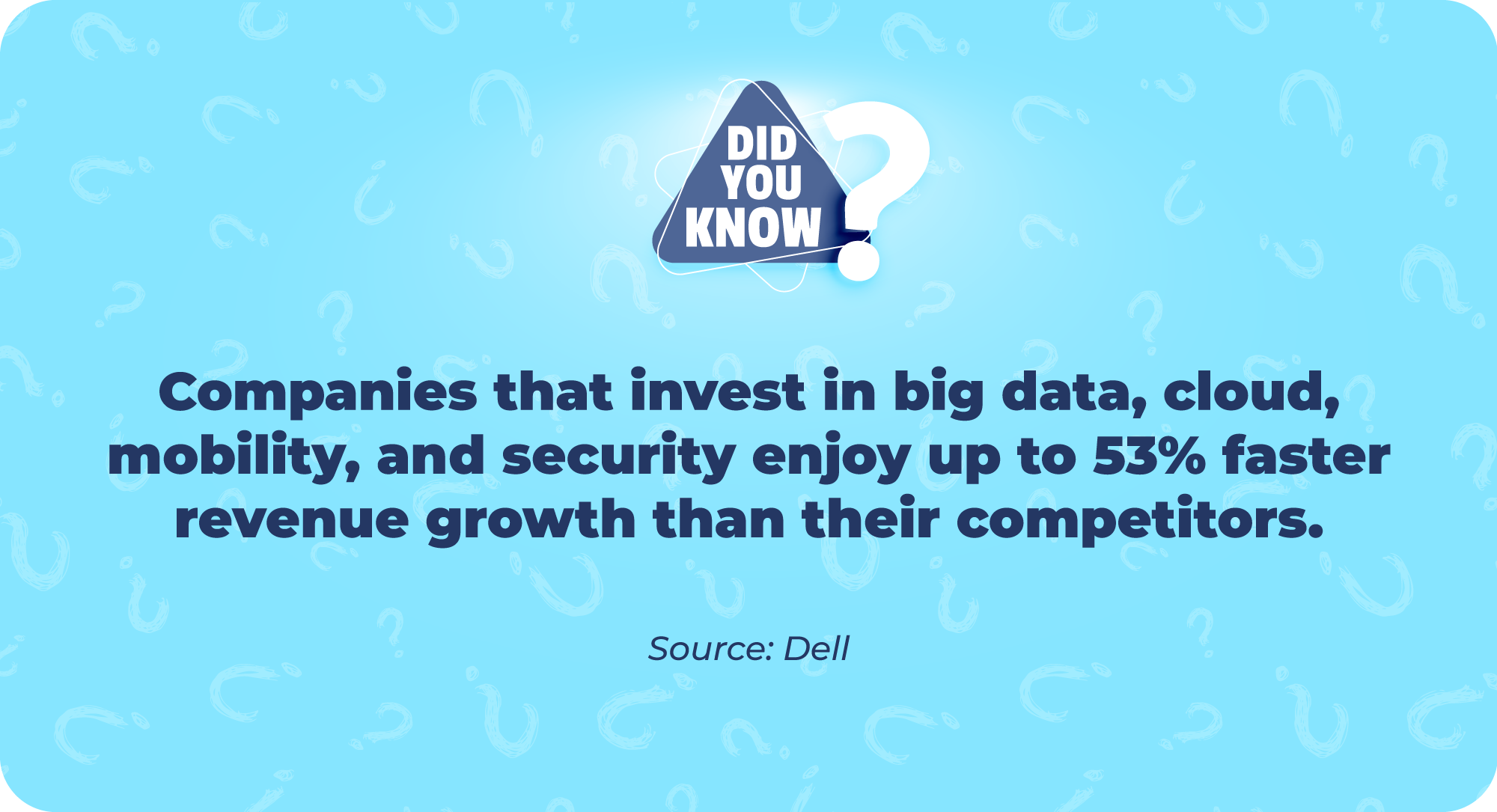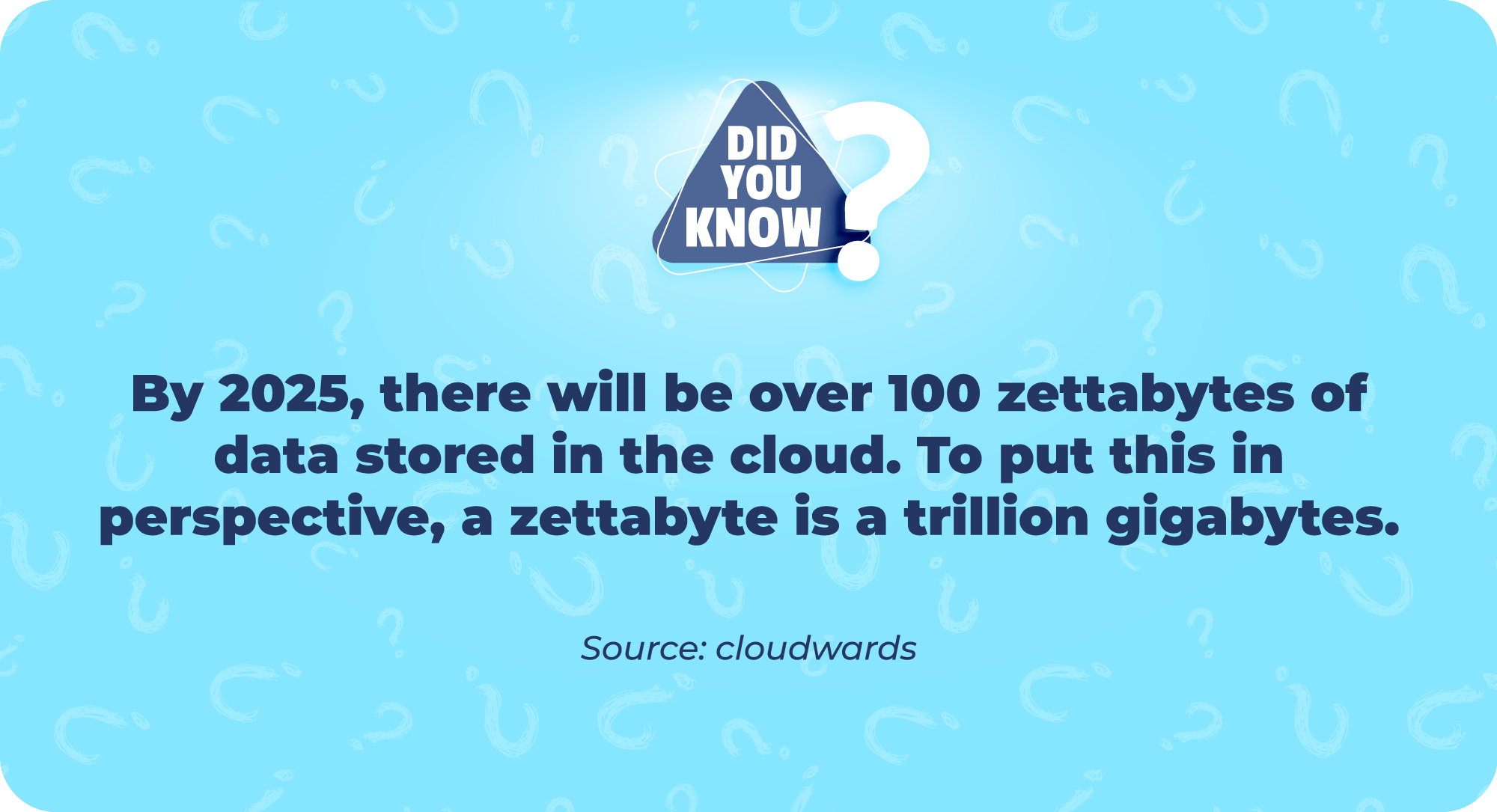
Cloud computing goes back to the 1950s when companies installed massive mainframes in dedicated rooms for users to access data. However, these huge structures require lots of space and accrue high maintenance costs. So, it became necessary to develop more efficient data storage and access solutions. Then, in the 1970s, IBM came up with its virtual machines (VMs), which allowed the hosting of multiple mainframes on a single platform. These machines marked the beginning of “virtualisation”, setting off a period of game-changing advancements in computing. Today, cloud computing has become one of the fundamental driving forces of the tech world. It has expanded data accessibility and made data storage affordable.
Understanding the basics of cloud computing
Cloud computing is virtual, on-demand access to resources needed for computing processes. These resources include applications, virtual and physical servers, networks, software tools, and data storage solutions. The ‘cloud’ is hosted at a data centre, usually remotely located. These centres are owned and managed by cloud service providers (CSP), such as Amazon Web Services (AWS) and Microsoft Azure, that charge a subscription fee for accessing the different computing resources. For example, you can buy additional space on the Google Cloud Platform at an extra charge, upload any kind of data, and share it with anyone anywhere in the world.
What’s so great about cloud computing?

The conveniences cloud services offer has propelled the adoption of cloud infrastructures among businesses. This type of infrastructure optimises their operations, bringing efficiency and economy to their processes. What are these conveniences? Let’s dive in.
(1) Agility
Central to a business’s success is how fast it can adapt to the changing times and innovate new products and services. To speed up these innovation efforts, having immediate access to various digital tools is critical. With cloud computing, businesses have transformed into agile entities. They can quickly retrieve datasets from the cloud service provider and harness the power of advanced technologies, such as big data and the Internet of Things (IoT). As a result, many sectors and industries are benefiting from the agility cloud computing provides.
(2) Scalability
One of the biggest challenges for businesses is devising ways to scale up or scale down their operations as and when required. Because it is hard to estimate resource provisioning, a company may over-employ or under-employ its resources. As a result, efficiency takes a hit and productivity suffers. By integrating operations with cloud capabilities, businesses can utilise only those resources necessary for a specific activity. Leading cloud companies are already launching advanced scalability solutions. In January 2023, for example, Altair Engineering upgraded its Simulation 2022.2, which enhances Altair’s cloud elasticity and scalability, electrification, and product development capabilities. In this case, cloud computing offers elasticity that removes the need to overhaul existing equipment and infrastructure. Thus, it ensures significant savings for a company. The promise of greater efficiency could also help companies reduce their carbon footprint and improve their sustainability quotient.
(3) Global deployment
Cloud computing has rendered geographical barriers irrelevant. Gone are the days when geography restricted business expansion. Today, cloud capabilities have allowed corporations to deploy their applications across the globe within minutes. Big cloud service providers have their infrastructures in multiple countries and locations. Companies can use these services to deploy their applications with a few clicks and swipes. As a result, doing business has never been easier.

The other side of cloud computing
While cloud computing has been a dream come true for businesses, it also suffers from serious drawbacks. The hunky-dory picture of cloud-based solutions comes with stains and smudges that companies need to consider.
(1) Security
With CSPs managing copious volumes of data daily, data security concerns have grown proportionately. Although the data transmitted are encrypted and protected, breaches continue to occur. For instance, in August 2021, Accenture’s highly advanced cloud system was breached by a ransomware attack, exposing customer data worth six terabytes. Constant upgrades to cloud platforms have thus become imperative for CSPs to safeguard customer data and instil confidence.
(2) Downtime
The possibility of the host cloud server being unable to function to capacity is the biggest worry for companies. Even an hour of downtime could result in massive revenue shortfalls and data breaches. Moreover, cloud downtime can make the server susceptible to data leakages and breaches. Cloud outages can also have cascading effects on services relying on the cloud platform. For example, when AWS’s servers experienced a sudden surge in December 2021, they suffered a prolonged downtime that affected platforms such as Prime Video and PlayStation Network.
(3) Changing clouds
Migrating from one cloud to another is very much possible, but it is a challenging journey. The main reason is that a company is likely to have configured its applications to suit the capabilities of a particular CSP. Moving all of those datasets onto another platform can be painful, as some applications might need to be compatible with the new cloud service. Vendor lock-in issues (when a customer is stuck with the original vendor because the cost of switching to a different vendor is too high) remain a real challenge for cloud adoption. However, most major cloud vendors have more or less similar capabilities, and switching between two vendors or even having applications distributed across two cloud platforms is a viable proposition.
Cloud computing and AI: a match for the ages
While cloud services are revolutionising data management, AI is aiding the management of cloud platforms. Cloud computing solutions use the power of AI to automate routine work. AI capabilities also enable cloud companies to identify data integration, storage, and extraction patterns. Additionally, this has increased the accuracy and predictability of operations. Furthermore, enterprises can streamline their cloud management processes using AI and machine learning (ML), adding value to the services they provide to their customers. Industry leaders like IBM are now foraying into cloud computing by coupling their AI capabilities with hybrid cloud services.
Cloud computing has many features that make its future brighter in all sectors. And it’s a great addition to your toolkit. Compared to the traditional infrastructures of the company, cloud computing guarantees an alleviation in the current scenario where there has been an explosion of data worldwide. If the loopholes outlined above are addressed, cloud computing could significantly impact how enterprises buy and use technology resources in the future.


